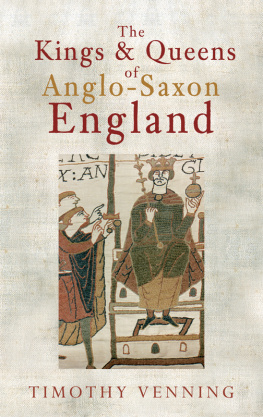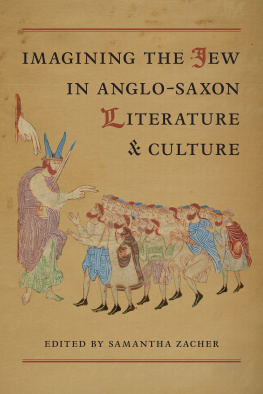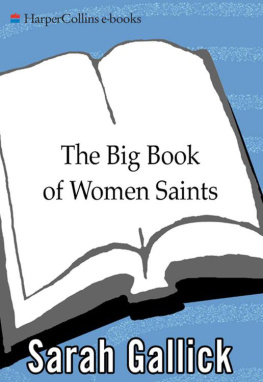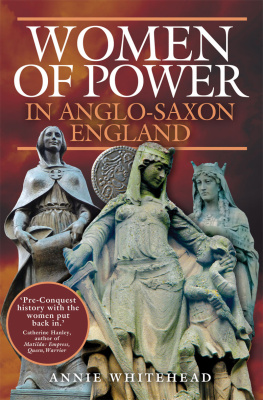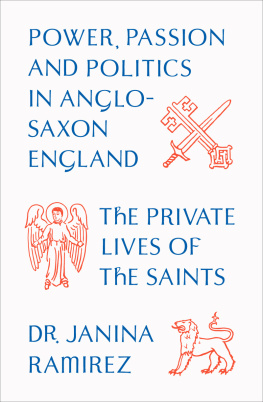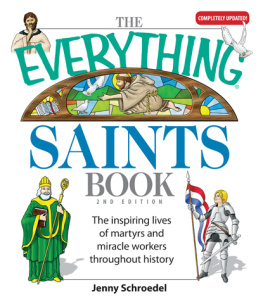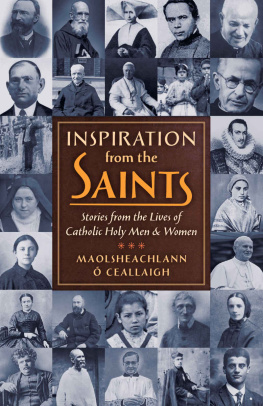WRITING WOMEN SAINTS IN ANGLO-SAXON ENGLAND
Writing Women Saints in Anglo-Saxon England
Edited by Paul E. Szarmach
University of Toronto Press 2013
Toronto Buffalo London
www.utppublishing.com
Printed in Canada
ISBN 978-1-4426-4612-4

Printed on acid-free, 100% post-consumer recycled paper with vegetable-based inks.
Livrary and Archives Canada Cataloguing in Publication
Writing women saints in Anglo-Saxon England / edited by Paul E. Szarmach.
(Toronto Anglo-Saxon series; 14)
Includes bibliographical references and index.
ISBN 978-1-4426-4612-4 (bound)
1. Christian literature, English (old) History and criticism. 2. Christian literature, Latin (Medieval and modern) History and criticism. 3. English literature Old English, ca. 4501100 History and criticism. 4. Women and literature England History To 1500. 5. Christian hagiography History To 1500. 6. Martyrologium (Anglo-Saxon). 7. Christian women saints in literature. 8. Women in literature. 9. Mothers in literature. I. Szarmach, Paul E., editor of compilation. II. Series: Toronto Anglo-Saxon series; 14
PR179.W65W75 2013 829.093522 C2013-902347-X
University of Toronto Press gratefully acknowledges the financial assistance of the Centre for Medieval Studies, University of Toronto, in the publication of this book.
University of Toronto Press acknowledges the financial assistance to its publishing program of the Canada Council for the Arts and the Ontario Arts Council.

University of Toronto Press acknowledges the financial support of the Government of Canada through the Canada Book Fund for its publishing activities.
For Katherine
Abbreviations and Short Titles
ASC | Anglo-Saxon Chronicle |
ASE | Anglo-Saxon England [cited as a periodical by volume and year] |
ASPR | Anglo-Saxon Poetic Records, ed. Krapp and Dobbie |
BHL | Bibliotheca Hagiographica Latina |
BL | British Library, London [in citations of manuscripts] |
BnF | Bibliothque nationale de France, Paris [in citations of manuscripts] |
Catalogue | Catalogue of Manuscripts Containing Anglo-Saxon, by Neil R. Ker |
CH I | lfrics Catholic Homilies: The First Series, ed. Peter Clemoes |
CH II | lfrics Catholic Homilies: The Second Series, ed. Malcolm Godden |
CH III | lfrics Catholic Homilies: Introduction, Commentary, and Glossary, ed. Malcolm Godden |
CCCC | Cambridge, Corpus Christi College [in citations of manuscripts] |
CCCM | Corpus Christianorum Continuatio Medievalis |
CCSL | Corpus Christianorum Series Latina [cited by volume] |
CSEL | Corpus Scriptorum Ecclesiasticorum Latinorum [cited by volume] |
CUL | Cambridge, University Library [in citations of manuscripts] |
EEMF | Early English Manuscripts in Facsimile |
EETS | Early English Text Society [cited in the various series: OS, Original Series; ES, Extra Series; SS, Supplementary Series] |
EME | Early Medieval Europe |
Handlist | Handlist of Anglo-Saxon Manuscripts, by Helmut Gneuss |
HBS | Henry Bradshaw Society |
HE | Bede, Ecclesiastical History of the English People [Historia Ecclesiastica; cited by book, chapter, and page] |
HMHW | Holy Men and Holy Women, ed. Paul E. Szarmach |
LS | lfrics Lives of Saints, ed. Walter W. Skeat [cited by number of the work, line, and page] |
MGH | Monumenta Germaniae Historica [cited by subseries and volume] |
OEM | Old English Martyrology |
PL | Patrologia Latina, ed. J.-P. Migne [cited by volume and column] |
WRITING WOMEN SAINTS IN ANGLO-SAXON ENGLAND
Introduction
The twelve essays in this collection occupy an important place in the contemporary study of women saints of Anglo-Saxon England, a field that continues to define itself and to move rapidly in many different directions, challenging received wisdom such as it is and offering alternative methodologies. This area of study has not yet reached the moment when it could achieve some sort of synthesis or consensus that would constitute a common view. One should never expect unanimity in academic discourse and to expect it from an area of study barely a half-generation old is too much to ask. There is, then, a multiplicity of themes, ideas, and issues still occupying attention, creating a certain vibrancy that almost guarantees that women saints will remain a sub-field of intellectual excitement for the foreseeable future. Within the continuing discussion this collection concentrates on four major areas or topics, as will be described below in greater detail. One overarching theme is the positive creative tension that through contrast demonstrates the fruitfulness between methods. Thus, Christine Rauer and Jacqueline Stodnick take two different routes to cast new light on a much neglected text, the Old English Martyrology; Rhonda McDaniel and Rene Trilling use traditional methodology and new theory, respectively, in studies of virgin martyrs; and the McDaniel-Trilling discussion contrasts with that of John Black and Virginia Blanton, who consider almae matres, not virgin martyrs. The multiplicity of topics includes the idea of genre in its various flexible manifestations and in the necessary bilingual nature of genre. In one sense virtually every chapter can be seen to be about genre. The major section of the collection is the exploration of genre and how Anglo-Saxon writers were no slavish imitators of generic possibilities. Any given chapter can be seen to be the intersection of two or more topical areas. Finding point and counterpoint in this volume is the best way to read it.
The first thematic focuses on perhaps the earliest prose piece in the canon, the Old English Martyrology (OEM), a text that despite its importance has seen comparatively few interpreters. As already noted, Christine Rauer and Jacqueline Stodnick consider this foundational work from two contrasting, if not complementary, positions. Rauer, who is preparing a new edition of the OEM, examines and contextualizes special features in those sections of the OEM focusing on female saints. The OEM holds a key position in the middle of the Anglo-Saxon period, mediating between the earlier period of Aldhelm and Bede and that of late Anglo-Saxon England. Evidence from the
Next page


